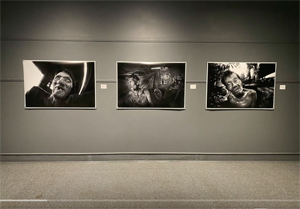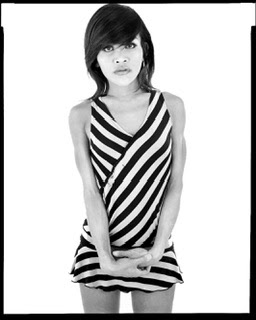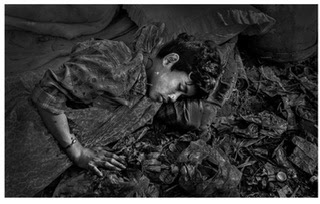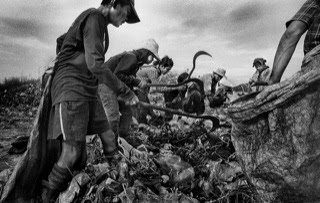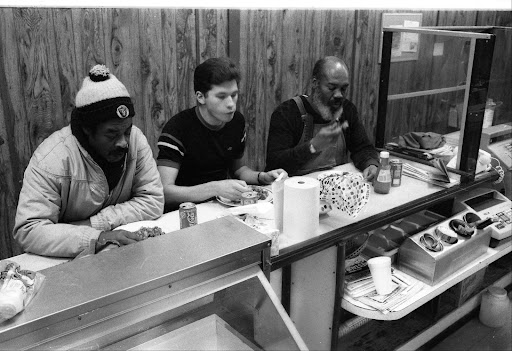I am reading a B&W Master Printing Class magazine by Bruce Barnbaum, he writes about the myth of placing shadows on zone 3 (when using the zone system) and also the difference between a photographer and a sensitometrist.
I understand where he is coming from I have photo acquaintances that are straight photographers and others that are more interested in testing and playing with densitometers. Sometimes the testing can get carried away and be quite riduclous, they do up charts, graphs and compute dozens of calculations with different film, camera, developer combinations. it never ends. Some tech photogs get so carried away with it all, they forget to make pictures! They test and test year in and year out, never really getting anywhere, it almost becomes some sort of ritualistic numbers fetish. I think they enjoy the testing stuff more than the photography, more than creating.
In his article Barnbaum makes some interesting comments on the difference of these two types, the photographer artist and the sensitometrist numbers cruncher. Bruce B strongly believes shadows should be placed on zone 4 or even higher and that development of the highlights should be done by eye. You figure out your film development times by experience (with your chosen film and light) and by looking at the negative and the final prints, not by testing and using a densitometer. He believes the sensitometrist makes negs to thin that lead to weaker prints, he believes negs should have some backbone, some density to them.
"Sensitometrists work with step wedges and their exact tones. They are like people who study a single musical note, a musical tone. But, melodies, which are made up of many notes, create a musical texture. You cannot get the feel of a melody by examining a single note, just as you can't get the feeling of texture by examining a single visual tonality. Sensitometrists do not work with textures, photographs do. Sensitometrists work with densitometers and graph curves. Sensitometrists are like piano tuners. You need them to keep the piano tuned, but you need a composer and pianist to play the music. Photographers are like the composer and pianist"
"...photographs are not step wedges; they are art meant to be personally expressive, to be seen by others, and to move them emotionally. They communicate a thought, a mood, an experience, a moment in time, a fantasy or any other idea the artist has to the viewer. They should be imbued with light and life. Following exact curves and exact enlarging times won't do this. You have to deviate from densitometer readings and identical approaches from one print to the next if you want to say something. You can run the tests yourself and get perfect results, but when you're in the field, you have to make adjustments if you want good photographs with rich tonal separations, palpable dimensionality, and emotional power. I don't own a densitometer. Never have. Never will. They give me no useful information. All I do is expose and develop a few negatives to find out what I want to know about a film' s response to light, and how the film works with a particular developer....Looking at negatives, making a few prints from them, and understanding the relationship between the negative and the print gives you more pertinent information than a densitometer does."
"Students should not be taught to keep negatives thin. Negatives should be stout, in order to yield good tonal seperations from the blacks to the whites."
My friend Larry has a 16x20 version of the photograph below by Bruce B and it is stunning, as good as anything if not better than what I seen in Ansel Adams prints. He must know what he is talking about, his work shows it.
I understand where he is coming from I have photo acquaintances that are straight photographers and others that are more interested in testing and playing with densitometers. Sometimes the testing can get carried away and be quite riduclous, they do up charts, graphs and compute dozens of calculations with different film, camera, developer combinations. it never ends. Some tech photogs get so carried away with it all, they forget to make pictures! They test and test year in and year out, never really getting anywhere, it almost becomes some sort of ritualistic numbers fetish. I think they enjoy the testing stuff more than the photography, more than creating.
In his article Barnbaum makes some interesting comments on the difference of these two types, the photographer artist and the sensitometrist numbers cruncher. Bruce B strongly believes shadows should be placed on zone 4 or even higher and that development of the highlights should be done by eye. You figure out your film development times by experience (with your chosen film and light) and by looking at the negative and the final prints, not by testing and using a densitometer. He believes the sensitometrist makes negs to thin that lead to weaker prints, he believes negs should have some backbone, some density to them.
"Sensitometrists work with step wedges and their exact tones. They are like people who study a single musical note, a musical tone. But, melodies, which are made up of many notes, create a musical texture. You cannot get the feel of a melody by examining a single note, just as you can't get the feeling of texture by examining a single visual tonality. Sensitometrists do not work with textures, photographs do. Sensitometrists work with densitometers and graph curves. Sensitometrists are like piano tuners. You need them to keep the piano tuned, but you need a composer and pianist to play the music. Photographers are like the composer and pianist"
"...photographs are not step wedges; they are art meant to be personally expressive, to be seen by others, and to move them emotionally. They communicate a thought, a mood, an experience, a moment in time, a fantasy or any other idea the artist has to the viewer. They should be imbued with light and life. Following exact curves and exact enlarging times won't do this. You have to deviate from densitometer readings and identical approaches from one print to the next if you want to say something. You can run the tests yourself and get perfect results, but when you're in the field, you have to make adjustments if you want good photographs with rich tonal separations, palpable dimensionality, and emotional power. I don't own a densitometer. Never have. Never will. They give me no useful information. All I do is expose and develop a few negatives to find out what I want to know about a film' s response to light, and how the film works with a particular developer....Looking at negatives, making a few prints from them, and understanding the relationship between the negative and the print gives you more pertinent information than a densitometer does."
"Students should not be taught to keep negatives thin. Negatives should be stout, in order to yield good tonal seperations from the blacks to the whites."
My friend Larry has a 16x20 version of the photograph below by Bruce B and it is stunning, as good as anything if not better than what I seen in Ansel Adams prints. He must know what he is talking about, his work shows it.
 |
| Bruce Barnbaum print |










